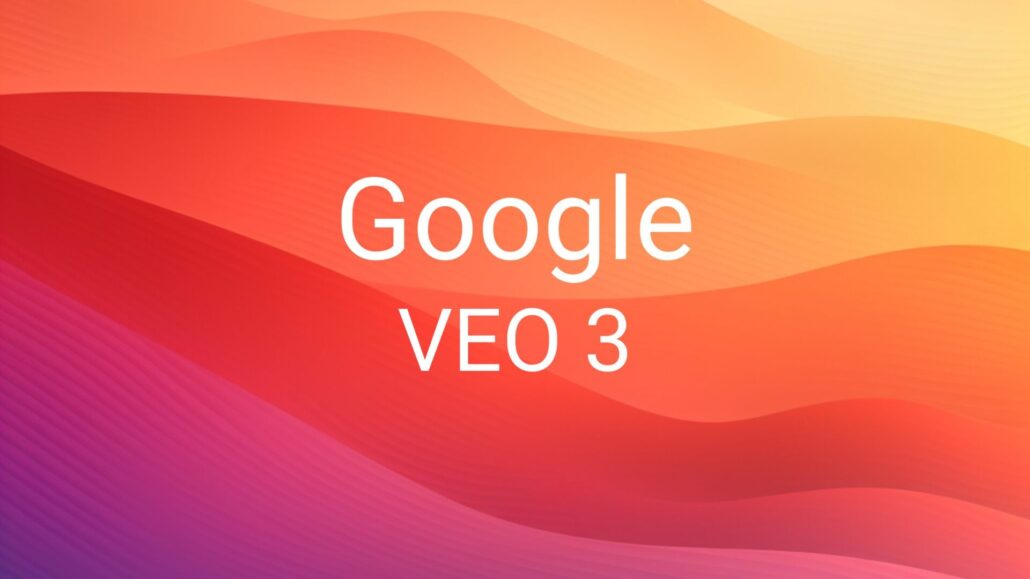Why Veo 3 Feels Like a Beta Test You Shouldn’t Pay For Yet

When Google unveiled Veo 3 at I/O 2025, the tech world went into overdrive. The company billed it as a generative video model that could leave competitors like OpenAI’s Sora scrambling to catch up. The promise? High-quality, text-to-video clips with synchronized audio, cinematic lighting, realistic motion, and a level of polish we’re not supposed to question. But let’s be honest: when Google says “filmmaking tool,” most of us hear “potentially broken but shiny experiment.”
After spending some serious time digging into Veo 3’s features, limitations, and performance, it’s clear that this AI video generator is both a glimpse into the future and a reminder that we’re still stuck in beta-testing land.
Veo 3 Review: Google’s Ambitious AI Video Generator Tested
What is Google Veo 3?
Veo 3 is Google’s flagship AI video generator, designed to turn text prompts into short, 8-second cinematic clips. It can animate images, create realistic physics-based motion, and, unlike its competitors, generate audio that matches the visuals. No more silent clips requiring hours of post-production for sound effects or music. This all-in-one approach is what sets Veo 3 apart.
Think of Veo 3 as a next-level evolution of Google’s previous generative model, Imagen, but with a lot more ambition. It’s integrated into Google’s AI ecosystem, which includes Gemini (for conversational prompting and scriptwriting), Imagen (for image generation), and Flow, a web-based AI filmmaking tool. This combination gives Veo 3 a major advantage in terms of workflow.
On paper, this sounds like a dream for creators. In practice, it’s more of a love-hate relationship.
Key Features of Veo 3
Text-to-Video Generation
Veo 3 shines when you throw cinematic prompts at it. It understands camera terminology like “aerial shot” or “dolly zoom,” and it can mimic natural lighting and realistic textures surprisingly well. Google’s demo clips, such as a colossal mechanical heart beating in a desert, showcase just how visually stunning this tool can be when it behaves.
Image-to-Video Animation
Got a static image you want to bring to life? Veo 3 can turn it into a moving scene, complete with sound. While this is impressive, it feels like a feature that’s still finding its footing. Some of the documentation even suggests this capability was initially tied to Veo 2, not Veo 3, which is confusing at best.
Realistic Physics and Motion
This is one of Veo 3’s strongest selling points. It does a solid job simulating real-world physics, whether it’s water rippling, shadows shifting, or objects colliding. When it gets it right, the results are almost indistinguishable from real video footage.
Native Audio Generation
Veo 3’s audio generation is its killer feature. It produces background ambiance, sound effects, and even dialogue in one go. Unfortunately, this is also where things get shaky. While ambient sounds like waves crashing or leaves rustling sound realistic, dialogue often fails spectacularly. Multiple reviewers have noted that lip-syncing is “completely broken,” with characters producing gibberish or, hilariously, saying the words “roar” instead of roaring. So yes, we’re not quite at the Pixar level of storytelling here.
Veo 3 Pricing and Plans
Google’s pricing structure for Veo 3 is where most people will raise an eyebrow.
- Google AI Pro ($20/month): Gives you access to a “fast” but lower-quality version of Veo 3, with a limited number of generations per day. Think of it as the “let’s see if this is worth it” tier.
- Google AI Ultra ($250/month): This plan unlocks the full Veo 3 model with higher daily limits, access to the Flow filmmaking tool, and premium features. But here’s the kicker: early testers have reported getting locked out after generating just five videos in a day. For $250 a month, that feels… generous, doesn’t it?
- Vertex AI API: For enterprise users, pricing is $0.75 per second of video. This model is predictable, but unless you have a corporate budget, it adds up fast.
Bottom line: unless you’re a marketer with deep pockets or a tech enthusiast who enjoys beta-testing expensive toys, the pricing feels hard to justify.
Real-World Performance
Veo 3 is the definition of hit-or-miss. When it hits, it creates stunning, atmospheric clips that feel ready for social media ads or quick concept art. When it misses, you’ll be left with unusable footage, wasted credits, and the creeping realization that you could have just filmed the scene with your phone.
Example Videos
For the sake of this review, I gave Veo 3 a few different prompts across 3 different styles. Here are the results:
Cinematic
Prompt: “A medieval knight in shining armor clashing swords with an enemy on a foggy battlefield, clanging metal sounds, distant war cries, and a dramatic orchestral battle score.”
Fun and Whimsical
Prompt: “A fluffy hamster in a tiny kitchen frying eggs on a stove, sizzling sounds, and playful ukulele background music.”
Experimental and Challenging
Prompt: “A futuristic hover-bike chase through a neon city, high-speed tracking shot, engines roaring, and an intense electronic drum and bass track.”
Where Veo 3 Excels
- Cinematic Lighting and Atmosphere: Veo 3 nails atmospheric B-roll. Whether it’s a moody forest or a sunset over the ocean, the results can be jaw-dropping.
- Audio Ambiance: The ambient sounds are impressively accurate. Things like water splashes or the creak of a wooden floor sync well with visuals.
- Prompt Adherence: Compared to its predecessor, Veo 3 is noticeably better at following instructions, especially for basic camera movements and scene compositions.
Where It Fails
- Dialogue and Lip-Sync: Broken. Completely broken. If you need character-driven scenes, Veo 3 isn’t your tool.
- Speed: Generating a single 8-second clip can take 3-5 minutes. This doesn’t sound terrible until you need 20 clips and realize your evening just vanished.
- Artifacts and Uncanny Valley Moments: Characters can have distorted faces or weird anatomy, and the more you watch, the creepier it gets.
- Usage Caps: Even on the Ultra plan, you can burn through your daily limit fast. If one clip glitches, that’s one generation wasted.
Competitive Landscape: Veo 3 vs. Sora, Runway, and Pika
The AI video generation market is crowded with ambitious contenders, and Veo 3 faces stiff competition from OpenAI’s Sora, Runway’s Gen-3 model, and Pika Labs. Each of these platforms caters to slightly different audiences, which makes this comparison crucial.
Veo 3 vs Sora
Sora is Veo 3’s biggest rival and for good reason. While Sora is known for its cinematic and creative visuals, it falls short on audio, producing silent clips that require additional sound editing. Veo 3, by contrast, gives you a full package with visuals and sound in one pass. That said, Sora tends to be more reliable in generating consistent and narrative-friendly visuals.
Veo 3 vs Runway
Runway’s Gen-3 model is all about professional reliability. It might not have Veo 3’s jaw-dropping moments of visual brilliance, but it makes up for it with a stable workflow, better control over outputs, and fewer artifacts. For creators who need predictable results, Runway might be the safer bet.
Veo 3 vs Pika Labs
Pika Labs leans into speed and fun, prioritizing quick generation times and creative effects over photorealism. For social media creators looking to churn out attention-grabbing clips in minutes, Pika is often a better fit. Veo 3, on the other hand, feels heavier and slower, especially when you’re trying to create a series of clips.
Feature Comparison Table
| Feature | Veo 3 | Sora | Runway Gen-3 | Pika Labs |
|---|---|---|---|---|
| Audio Generation | Yes (integrated) | No | No | Yes |
| Resolution | 720p (1080p upscale) | 1080p | 1080p | Lower default |
| Clip Length | 8 seconds | Up to 60 seconds | Up to 18 seconds | 3-6 seconds |
| Speed | 3-5 mins per clip | ~5 mins | Faster | <1 minute |
| Control & Editing | Moderate (via Flow) | Storyboarding | Strong (Frames) | Flexible |
| Best For | B-roll, marketing | Filmmaking | Pro workflows | Social media |
| Pricing Model | $20-$250/month | Subscription | Credits-based | Freemium tiers |
Ratings (Out of 5)
- Veo 3: 3.5/5 (Excellent for atmosphere, but limited by speed and dialogue issues)
- Sora: 4/5 (Cinematic visuals but lacks integrated audio)
- Runway Gen-3: 4.2/5 (Reliable and professional)
- Pika Labs: 3.8/5 (Fast and fun but less realistic)
Best Use Cases for Veo 3
If you’re a filmmaker hoping to craft your next masterpiece entirely with Veo 3, pump the brakes. This tool is best suited for:
- Marketing and Advertising: Quick ad clips, product demos, and engaging B-roll.
- Social Media Content: Short, eye-catching visuals for TikTok or Instagram.
- Conceptual Pre-Visualization: Filmmakers can storyboard ideas or prototype scenes without a full crew.
Trying to use Veo 3 for long-form storytelling right now is like trying to shoot a blockbuster movie on a disposable camera. You can do it, but you’ll regret it.
Downsides and Ethical Concerns
Veo 3 is impressive in many ways, but there are some glaring downsides you can’t ignore. Let’s start with the obvious: reliability. While Veo 3 can nail atmospheric B-roll, it struggles with anything involving characters or narrative-driven scenes. If you need a video with talking characters, good luck. Dialogue generation is clunky, often nonsensical, and lip-syncing is so far off that it makes old dubbed movies look like Oscar winners.
Usage Restrictions and Cost
Another major downside is how restrictive Google is with usage. Even the Ultra plan at $250 a month has generation limits that feel ridiculous for the price. Five or six failed attempts and you’re locked out for 24 hours. Add the slow generation time, and suddenly the “creative flow” Google promises feels more like creative gridlock.
To make things worse, Veo 3 isn’t cheap if you go the enterprise route. The API’s $0.75 per second cost means a single minute of video will cost $45—and that’s before you even consider editing or re-rendering multiple variations.
Deepfake Risks and Misinformation
Beyond the technical flaws, Veo 3 brings up some serious ethical concerns. Because it produces realistic audio and video, it’s a deepfake machine just waiting to be misused. While Google has implemented watermarking and content safety measures, they aren’t foolproof. Cropping, editing, or even basic filters can strip out visible watermarks, and most people will never bother checking for hidden metadata.
In the wrong hands, Veo 3 could easily generate fake political events, celebrity scandals, or outright propaganda. The potential for misinformation is massive, and critics are already warning about the erosion of trust in visual media.
Copyright Headaches
Then there’s the elephant in the room: training data. Like most AI models, Veo 3 is a black box when it comes to what copyrighted content was used for training. This not only raises legal concerns but also complicates who owns the content you generate. If you’re planning to use Veo 3 videos commercially, you might want to have a legal team on standby.
Who Should Use Veo 3?
The answer depends on your goals:
- Marketers and Social Media Teams: If you need quick, polished clips for ads or product promos, Veo 3 could be a huge time saver. Just keep your expectations realistic.
- Filmmakers: Use it for pre-visualization and storyboarding, not your final cut.
- AI Enthusiasts: If you’re fascinated by cutting-edge AI and don’t mind some chaos, Veo 3 will scratch that itch.
For most professionals, though, Veo 3 feels like an expensive proof of concept rather than a reliable workhorse.
Pros and Cons
Pros:
- Stunning B-roll and atmospheric visuals.
- Integrated audio generation (ambient sound and SFX are on point).
- Great for conceptual work and experimentation.
- Strong ecosystem with Gemini, Imagen, and Flow.
Cons:
- Dialogue and lip-syncing are essentially broken.
- Expensive pricing tiers with tight usage limits.
- Slow generation times for short clips.
- High risk of misuse (deepfakes, misinformation).
- Unclear copyright and content ownership issues.










Leave a Reply
Want to join the discussion?Feel free to contribute!